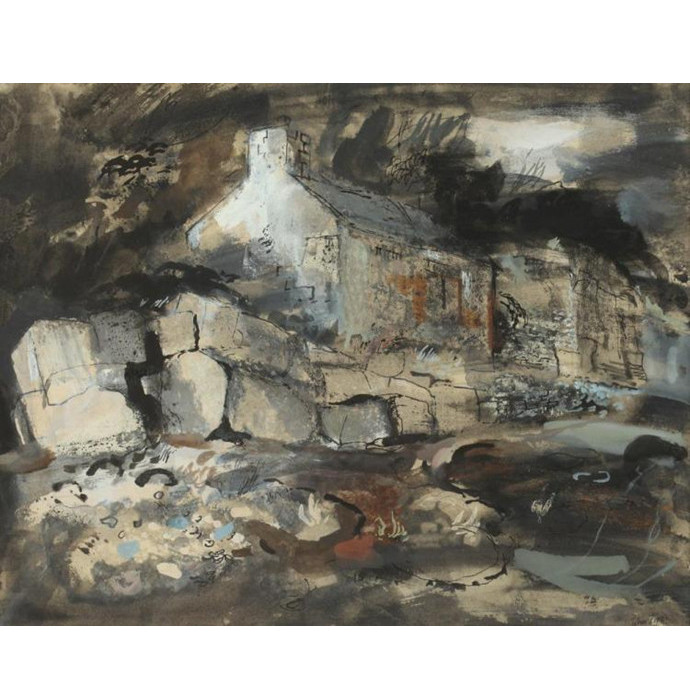- You cannot add "Thornton, Valerie: St David's - SOLD" to the cart because the product is out of stock.
Piper, John: Red Wharf Bay, Anglesey – SOLD
£18,500.00
Out of stock
Description
Artist: John Piper (British, 1903-1992), signed lower right
Title and date: Red Wharf Bay, Anglesey, 1950
Size of picture: image size: 36.5 x 47.0, newly framed
Description: a superb gouache and watercolour recently ‘repatriated’ from the United States of America.
I am immensely grateful for the following description to Hugh Fowler-Wright, the well-known Piper expert and co-author (with David Fraser Jenkins), of ‘The Art of John Piper’, published by Unicorn and the Portland Gallery in 2015:
‘This was painted towards the end of John Piper’s concentrated period (c.1943 to 1952) exploring and depicting the natural landscapes around Snowdonia. At this time Piper was based in a rented cottage at Bodesi farmhouse near Tryfan, often during the winter months.
Piper primarily sought out grand scenes of mountains, lakes and scattered rocks to depict, but he also made a few more domestic sized works showing man-made structures embedded into the rugged landscape. Here the dry stone wall and modest cottage are rooted into their surroundings by years of weathering and Piper’s palette.
Many of Piper’s best paintings from this period were shipped to America for exhibition and then sold into public and private collections there. Indeed this picture was in an American private collection until recently. It is highly likely to be the ‘Red Wharf Bay’ listed in the ‘John Piper’ exhibition of 1951 (February 6th to March 4th) at the Philadelphia Arts Alliance.
‘Red Wharf Bay, Anglesey’ is closely related to ‘Nant Ffrancon Farm’ 1950, mixed media, in the Derek Williams Trust/National Museum of Wales’.
More images can be provided on request.
Artist description:
Born in Epsom, John Egerton Christmas Piper studied at Richmond School of Art and the Royal College of Art from 1926-8. In the mid 1930a, after a visit to Paris, he turned to abstraction. He became a member of the London Group in 1933 and the ‘Seven and Five’ group in 1934-5. During this period he became friends with Oliver Simon of the Curwen Press and his interest in lithography and print making grew. During the Second World War, Piper was appointed as an official war artist recording the effects of the blitz on Britain’s buildings. After the war, he became a Trustee of the Tate and National Galleries and in 1959 he became a member of the Royal Fine Art Commission. Piper is best known for his extensive studies of British architecture and landscape in oil, watercolour and print, and for his photography, stained glass, ceramics, fabric design, murals, stage sets and costume design. His work is held in many Museums and Galleries.

